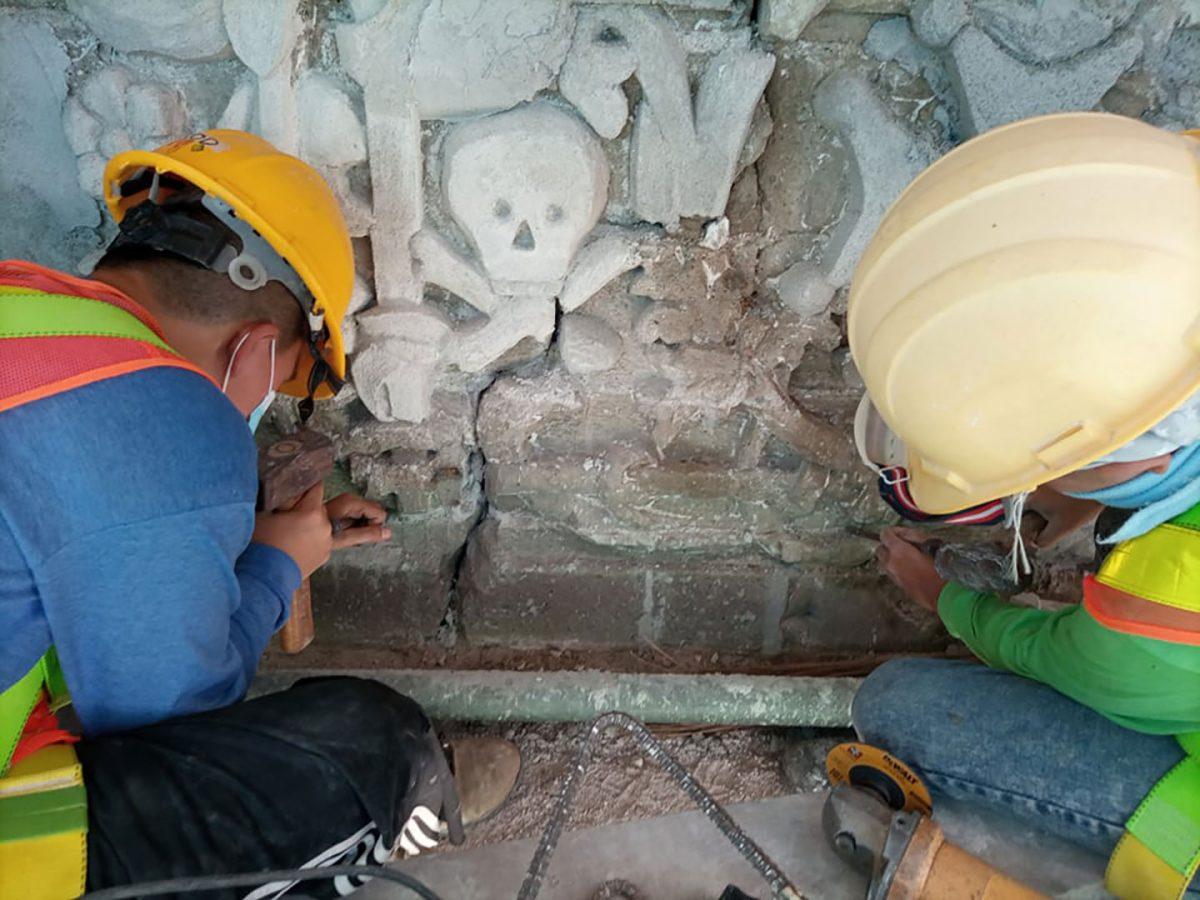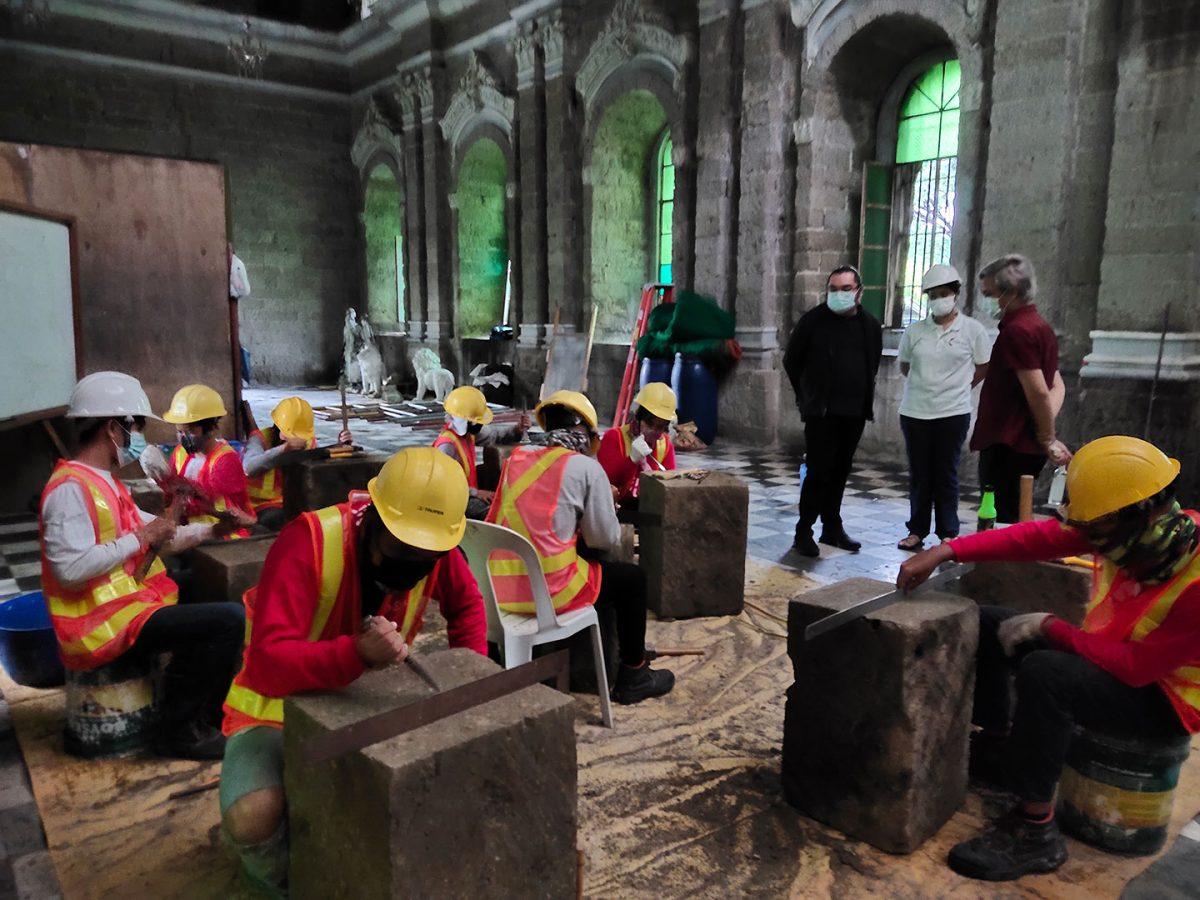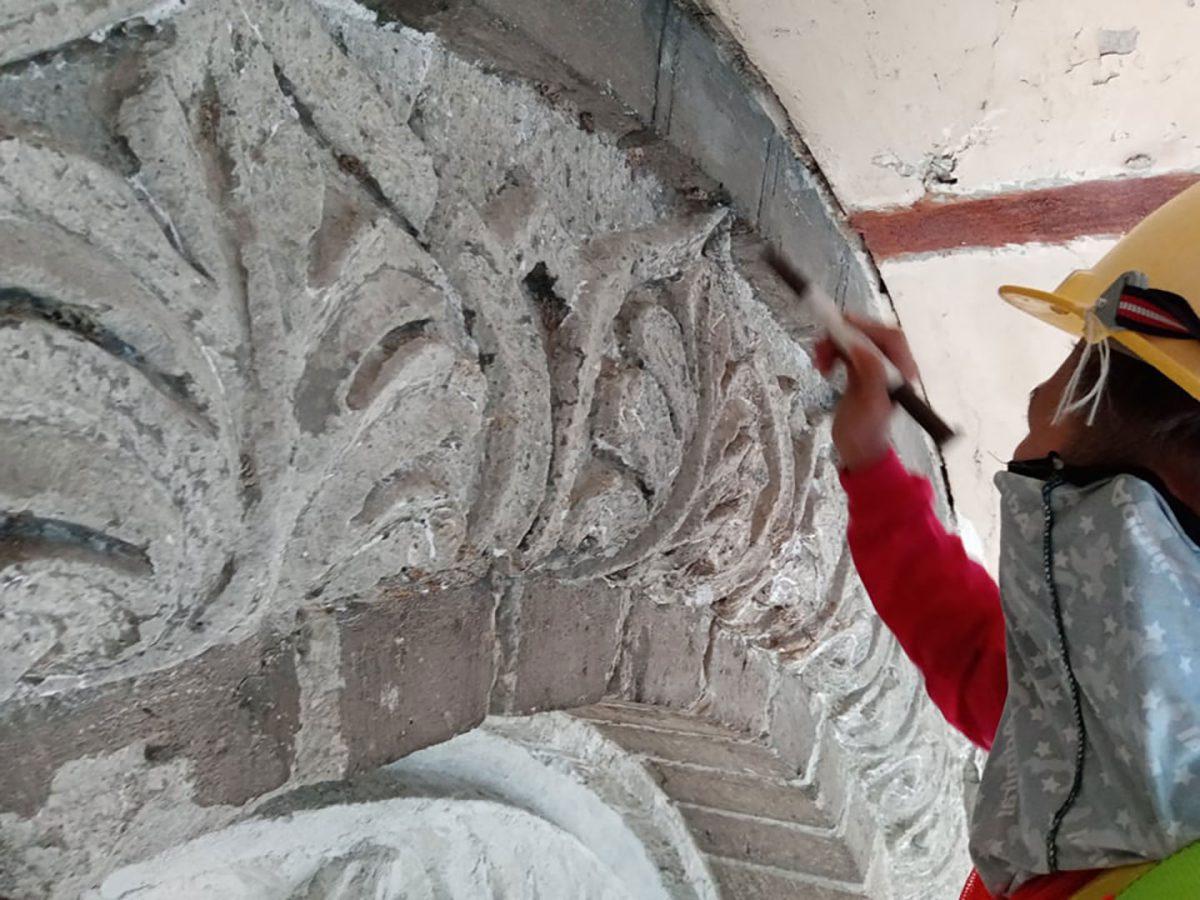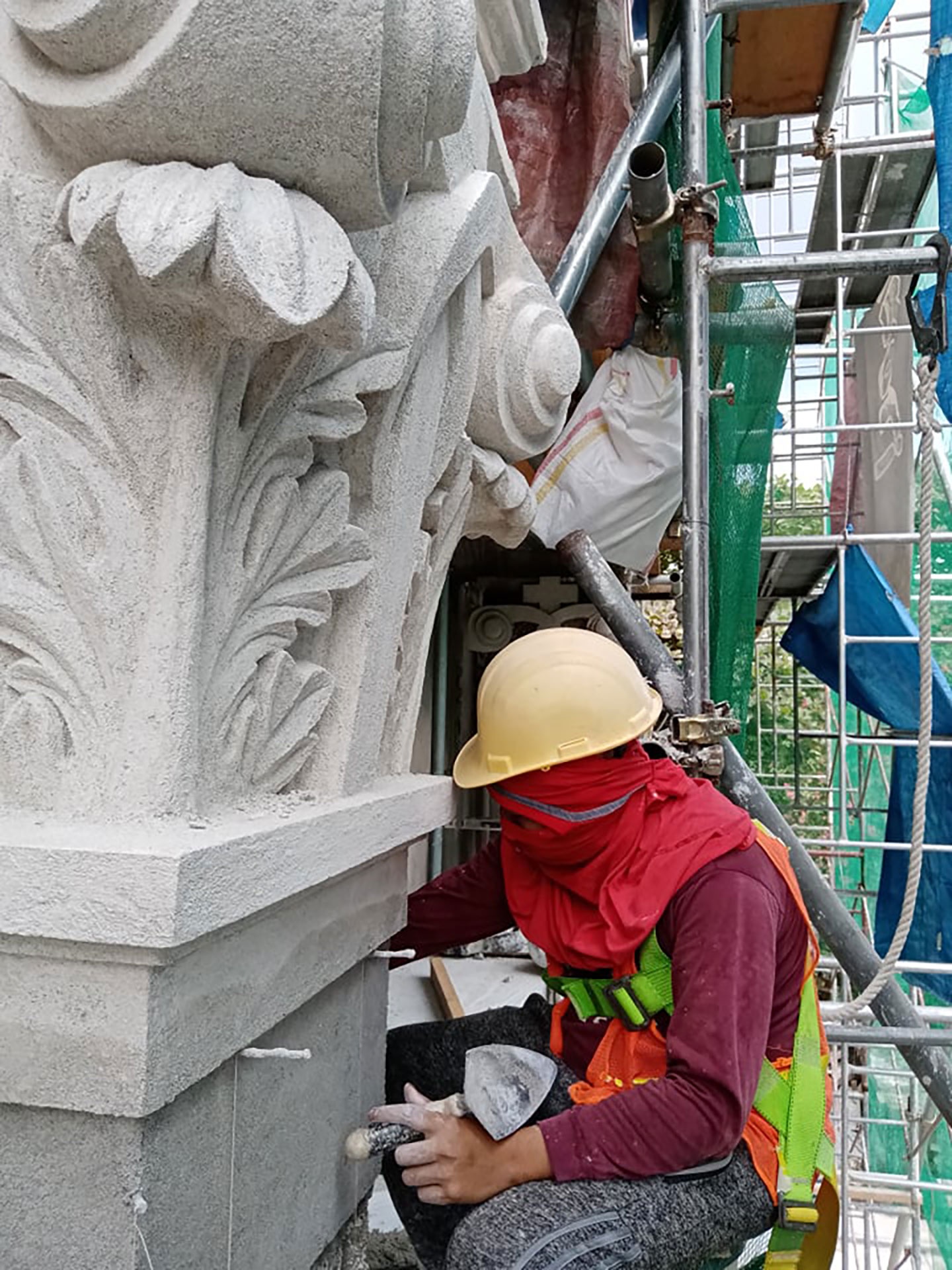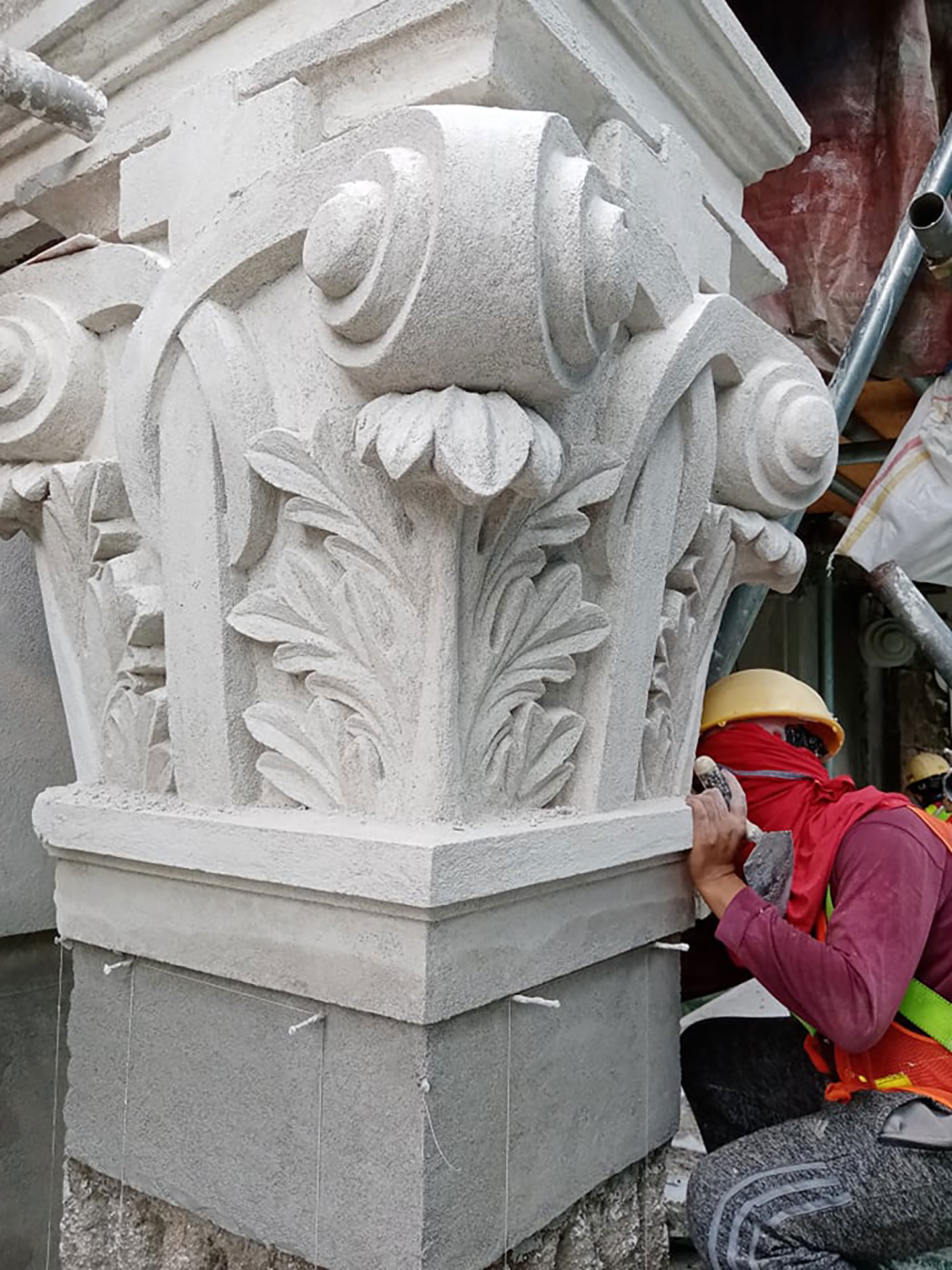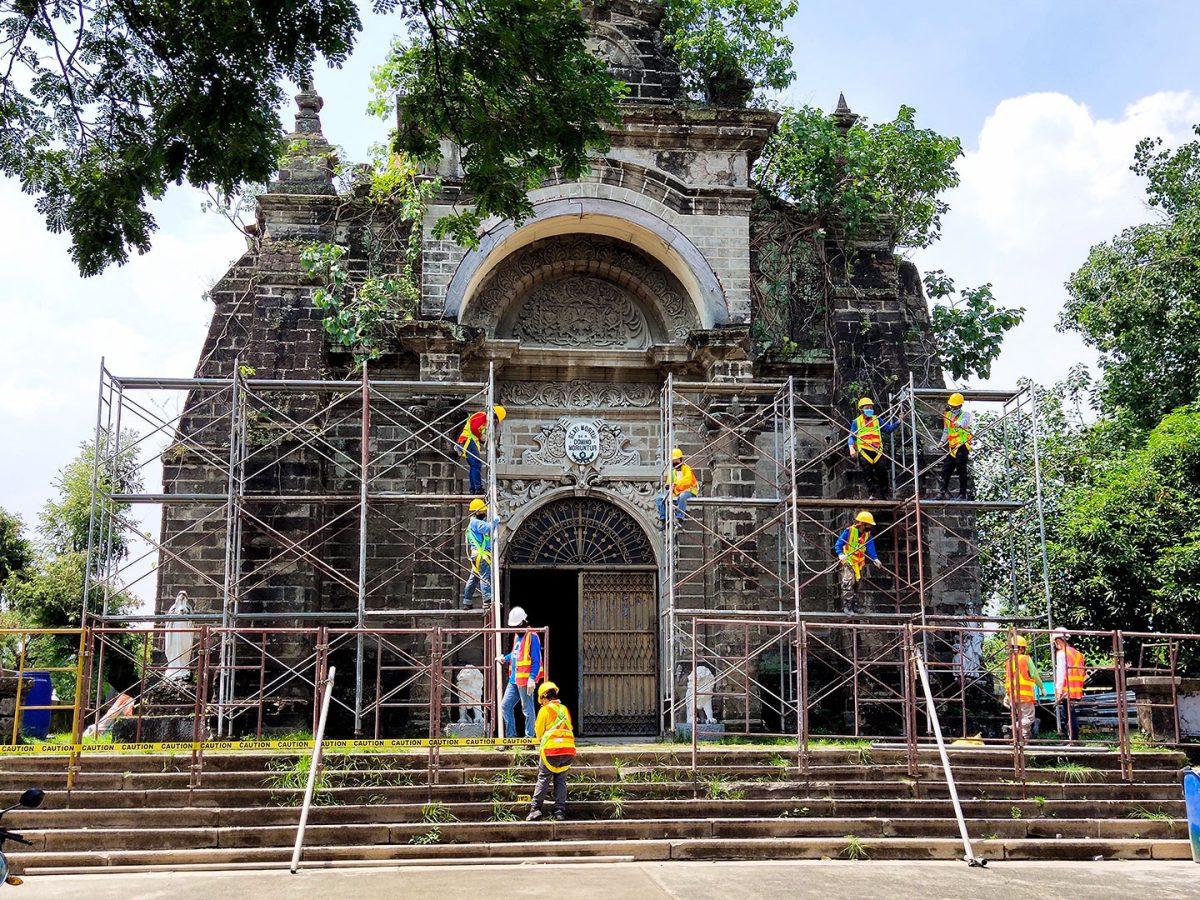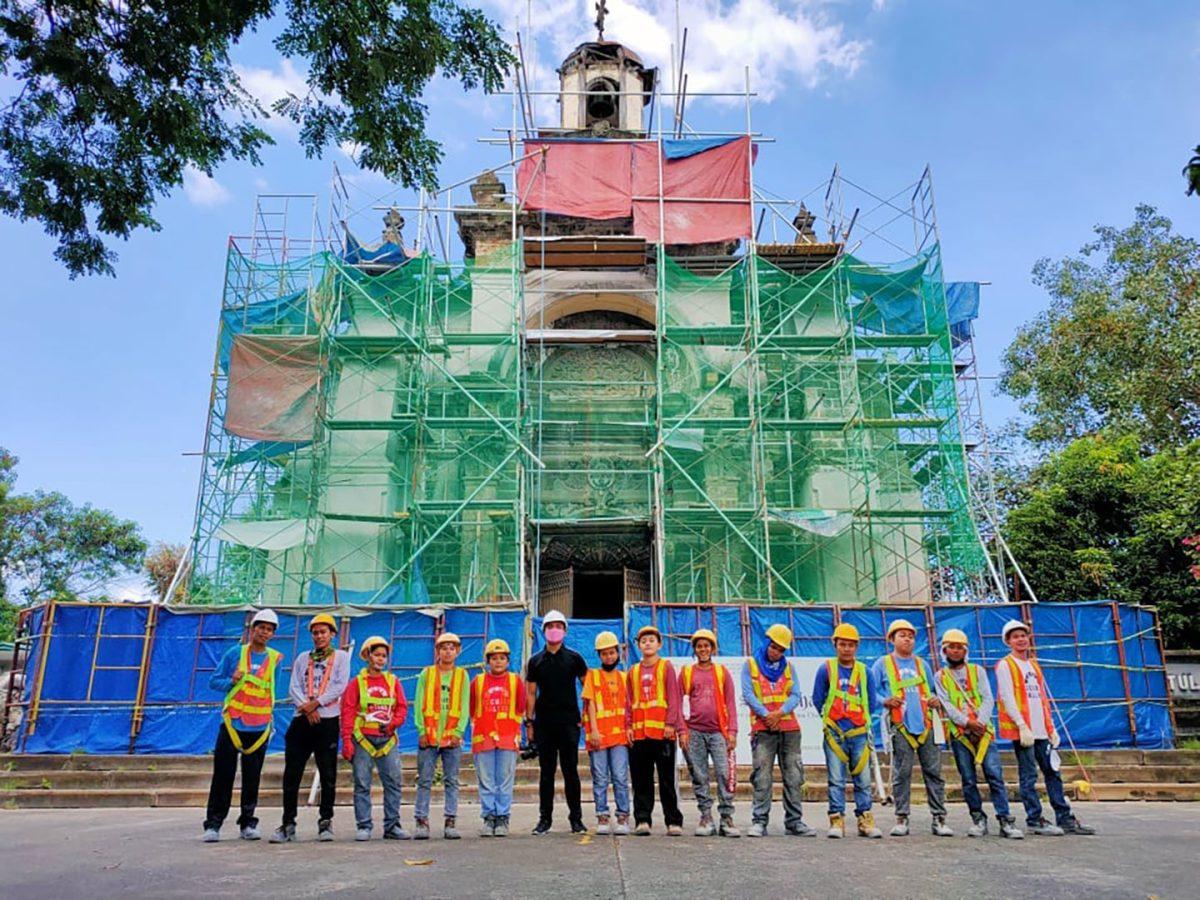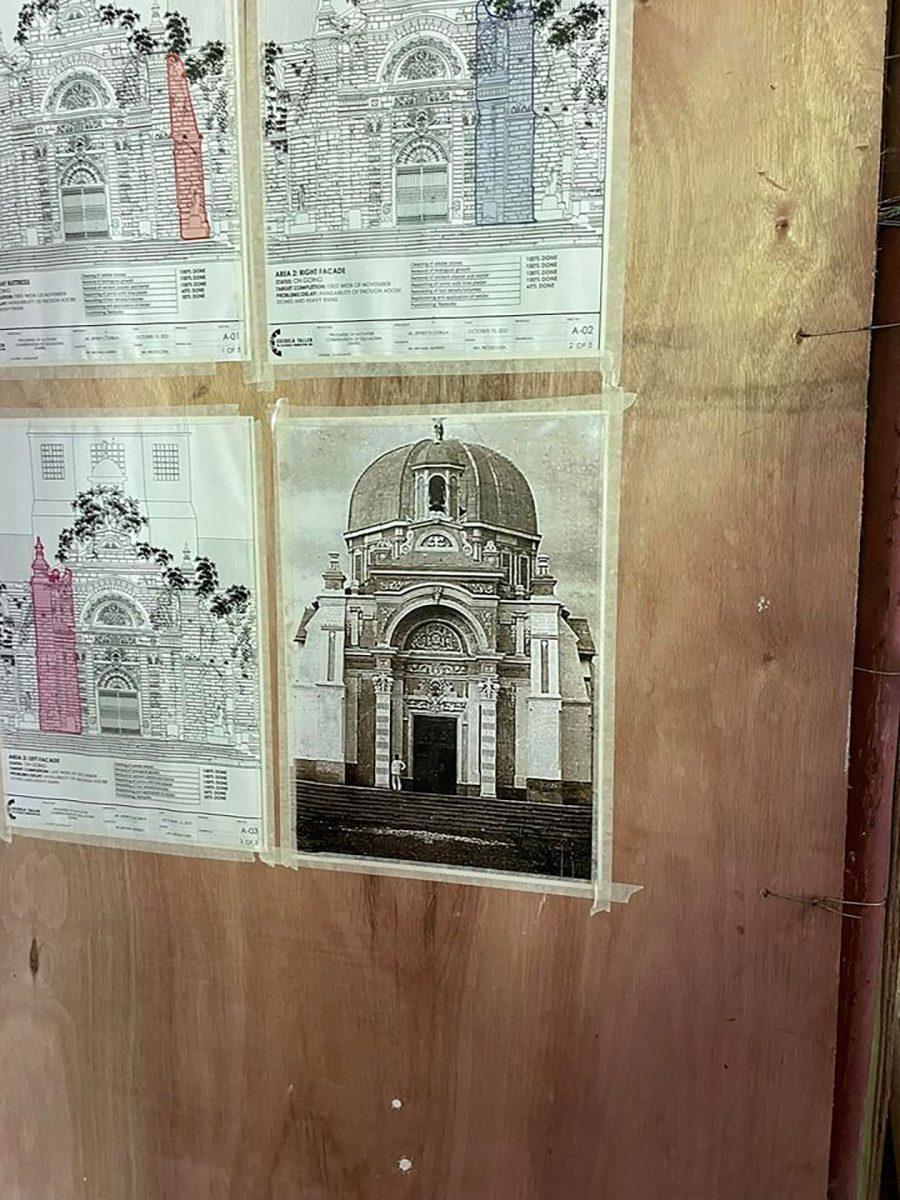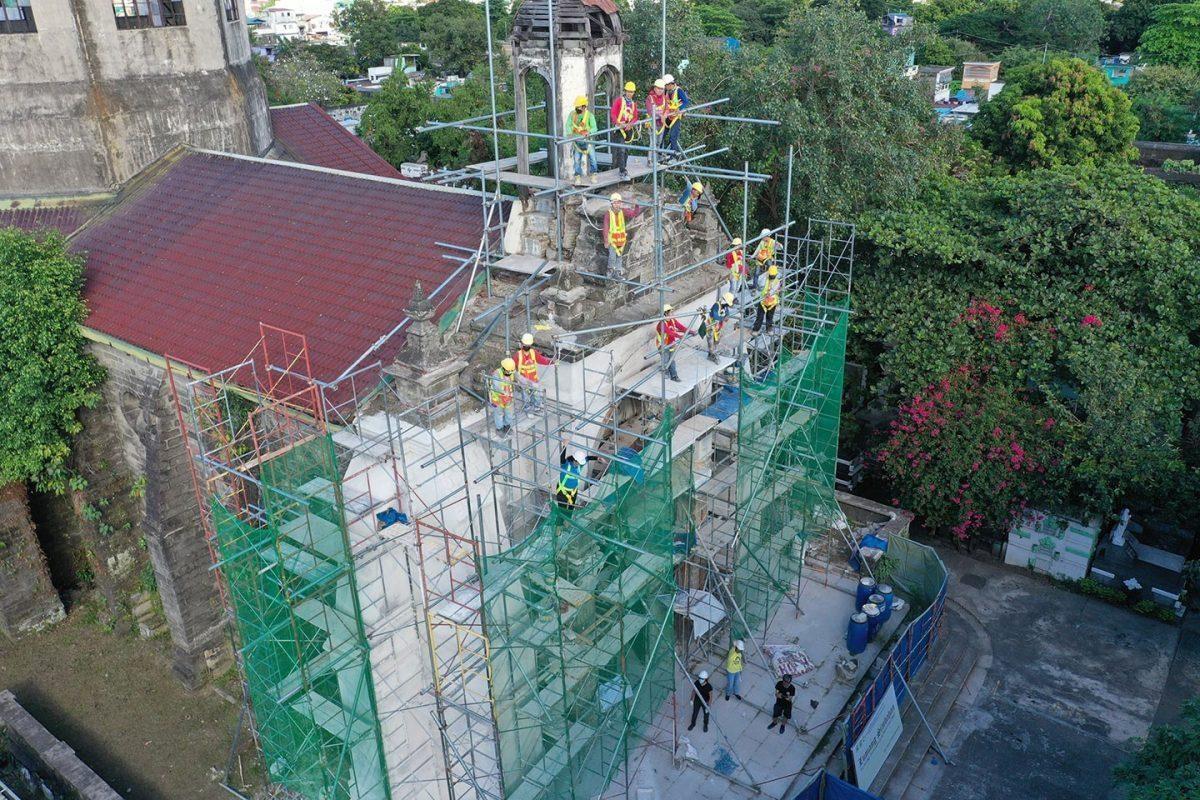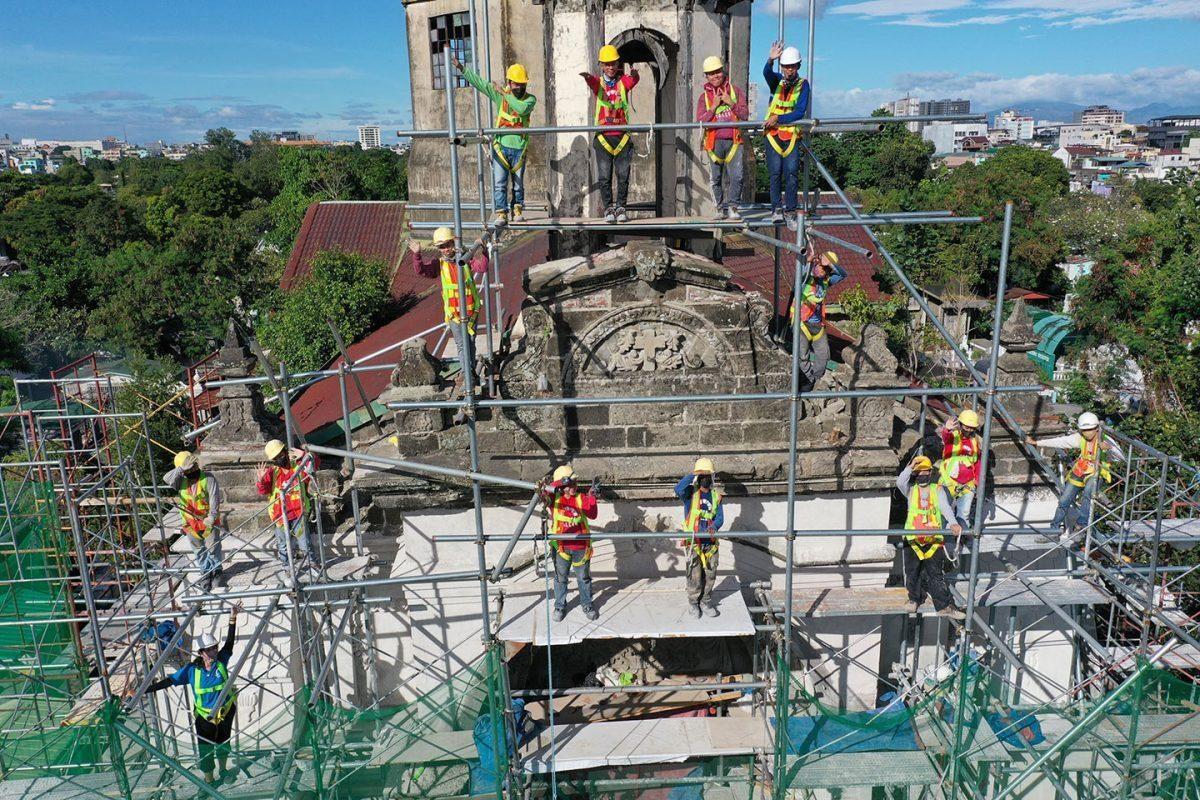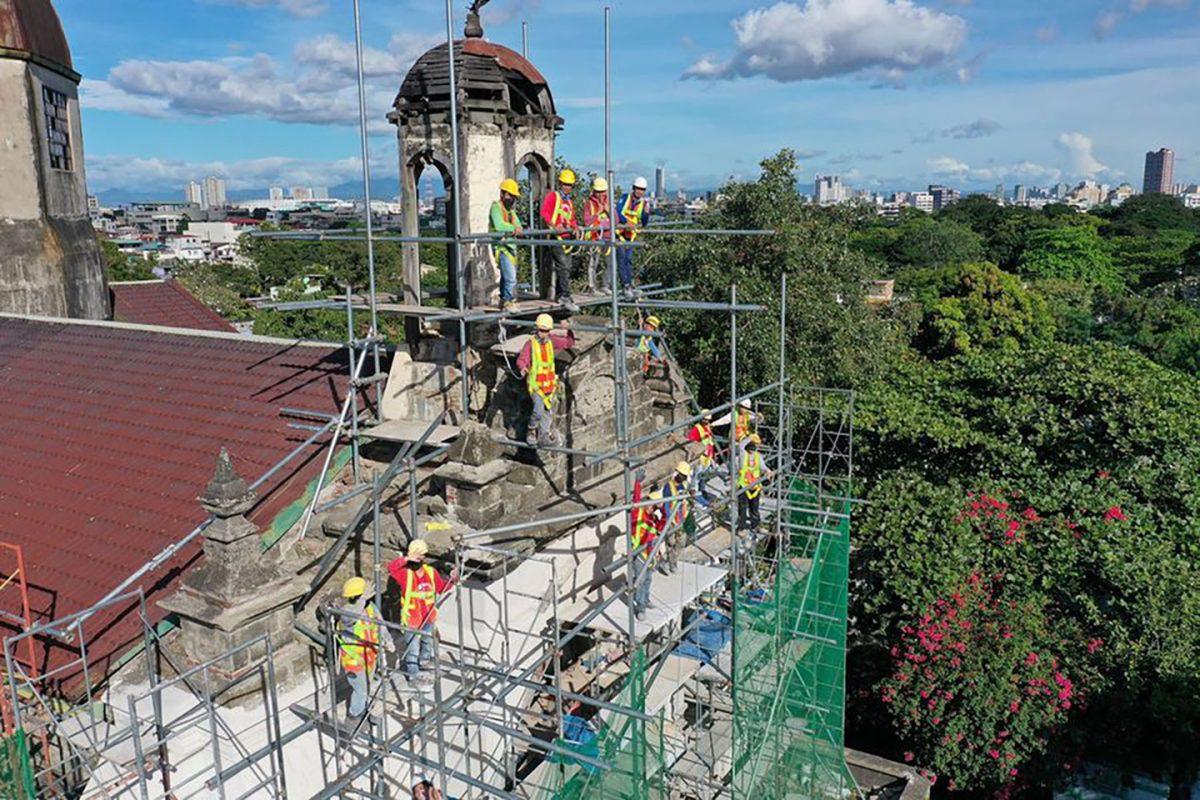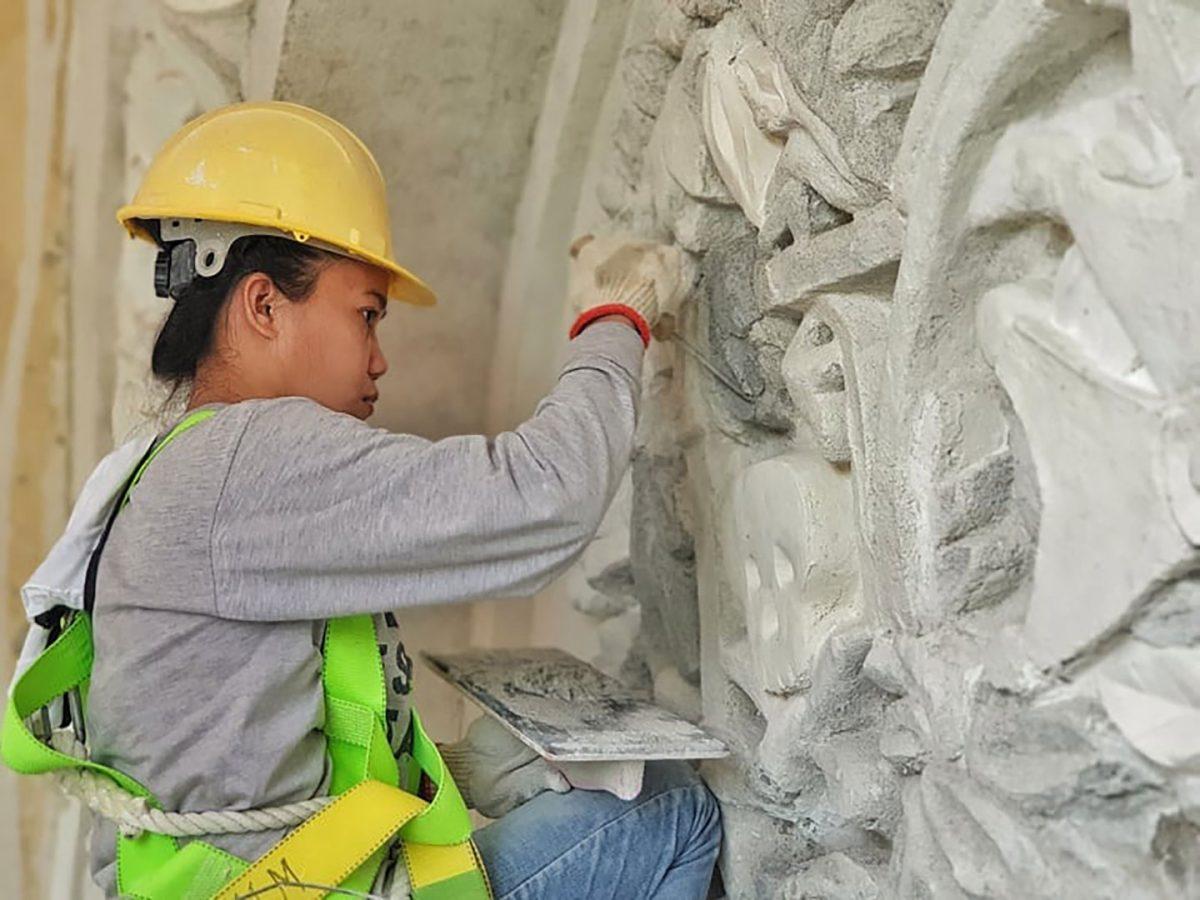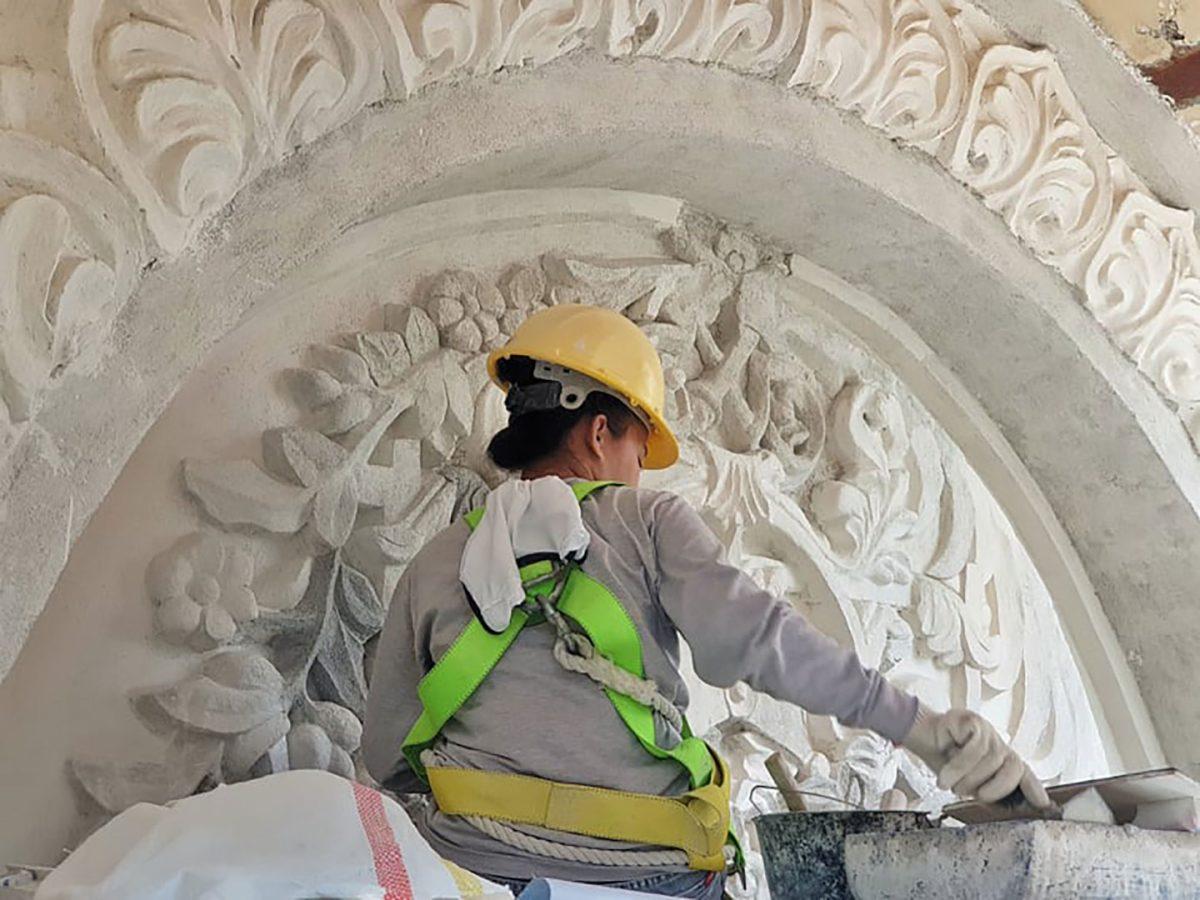MANILA, PHILIPPINES — After eight months, Escuela Taller is expected to finish its conservation work on the La Loma cemetery chapel’s facade by the end of March.
According to Jeffrey Cobilla, architect and head of Escuela Taller’s conservation team, the completion of the chapel’s facade reaffirms Escuela Taller’s work in advancing preventive conservation in the country as well as its mission to give employment to heritage workers, particularly the graduates of Escuela Taller who were former out of school youth.
Ar. Cobilla said, “ We are pleased that we are able to deliver our several missions at once; one is that Escuela Taller is being able to contribute to the preservation and conservation of our nation’s cultural assets and then realize our equal aims to keep a dying craft alive while giving employment to our heritage conservation workers and make our projects effective platforms on our advocacy on proper and mindful care of our built heritage.”
Together with the Diocese of Kalookan, Escuela Taller launched the project in June 2021 and officially started in July last year. The start of the project coincided with the commemoration of the 500th year of the arrival of the Christian faith in Philippine soil.
Among the accomplishments made by Escuela Taller’s conservaton team include the removal of destructive vegetation that has crept to the masonry stones for years, the removal of cement plaster that once covered the building, the rehabilitation and replacement of deteriorated and damaged masonry units along with reinstatement of lost details of the facade. Escuela Taller also removed the hazards in the cupola including the preparation of wooden posts and the repair of the wooden dowel atop the right pilaster.
The project employed a total of 16 graduates of Escuela Taller who had already been experienced and exposed to conservation projects similar to this one. These are trained masons and heritage conservation workers of Escuela Taller who have also been involved with ET’s conservation projects including that of Malate Church, Paco Park ossuary, among others.
The project is a display of Escuela Taller’s sustained experience in the craft of traditional masonry and the use of traditional materials such as adobe, the primary construction material or fabric.
Fr. Paul Woo, Director of the Diocesan Commission on Cultural Heritage of the Diocese of Kalookan said “With these efforts to preserve and conserve, more and more people now become appreciative of these signs of faith and history. Though inanimate, these tangible pieces of history are not just structures that show ‘antique’ features nor are those simply stone-made chapels.”
Fr. Woo also said, “at present, the Diocese is on its way to publish a coffee table book that traces the beginnings of the Catholic Faith in the Diocese. Efforts are also now directed to look for more sponsors, benefactors, and other assistance needed to make way for the conservation of the left and right sides of the church”.
During the restoration, the Diocese together with Escuela Taller have also begun working on a Conservation Management Plan (CMP) and plans to implement it little by little. The plan can enable the Diocese to find ways and means for funding and other resources needed to realize what is in the plan.
The cemetery also known as Cementerio General de la Loma was built as a response to the environmental and health concerns during the Spanish period. First there was the 1863 Manila earthquake and the overflow of other state-run cemeteries such as Paco and Sampaloc cemeteries and the need for more organized burials which also responds to the growing population of that time. After years of delay, it was completed in 1884 amid the cholera outbreak of 1882.
The chapel was used as a fort by Filipino fighters during the Philippine-American
War (Philippine Insurrection as it was referred to in US history) and was later
partly shelled by a bomb aptly named “Dewey.”
Escuela Taller and the Diocese of Kalookan will go on working together to keep the conservation of the rest of the chapel, which aims to go ahead with the rehabilitation of the rest of the walls, both the interior and exterior walls, immediately.



